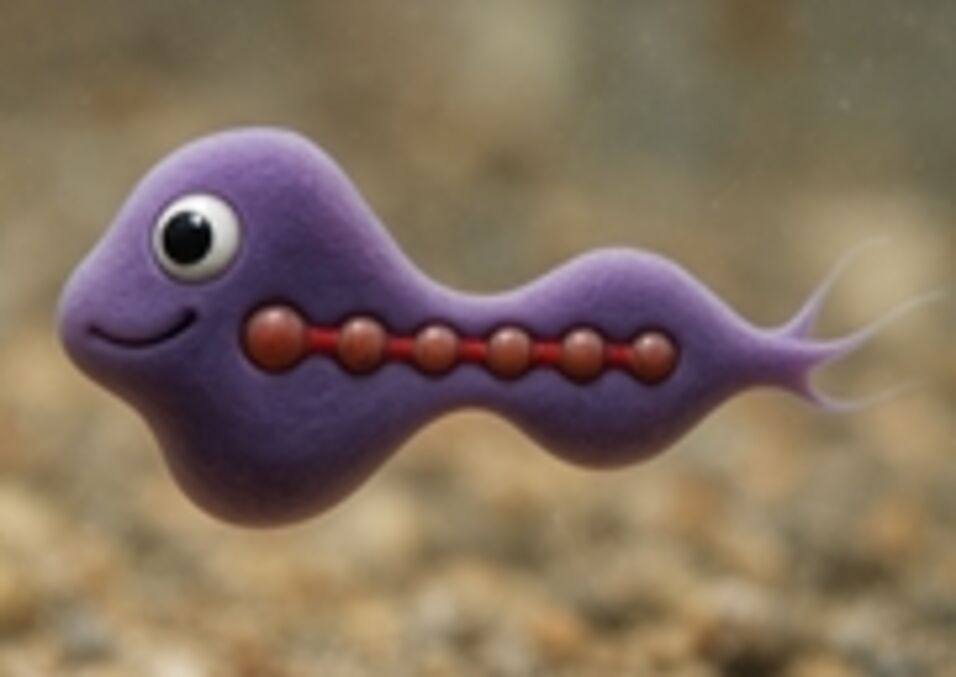Bacteria can do it, amoebae can do it, even blood cells can do it: they all have the ability to move purposefully in liquids. And this despite the fact that they are extremely simple structures without a central control system. How can this be explained? A team from TU Wien, the University of Vienna and Tufts University (USA) recreated this type of movement on a computer and was able to show that it works: Swimming movements are possible even without a central control unit. This not only explains the behavior of microorganisms, it could also enable nano-bots that can move in a targeted manner, for example to transport medication to the right place in the body.
“Simple microorganisms can be imagined as being made up of several parts, a bit like a string of pearls,” says Benedikt Hartl from the Institute of Theoretical Physics at TU Wien and the Allen Discovery Center at Tufts University, first author of the current publication. “The individual parts can move relative to each other. We wanted to know: Under what circumstances does this result in a movement that causes the entire organism as a whole to move in a desired direction?”
This is relatively simple if there is a central control system - something like a brain or at least a nerve center. Such a center can issue specific commands to the individual parts. It is easy to understand that this results in coordinated movement.
But a single-celled organism naturally has no nerve cells, no central processing system that could give commands. How is it possible in this case for a coordinated swimming movement to occur? If the individual parts of the microorganism all behave according to very simple rules - can this result in collective behavior that leads to an efficient swimming movement?
This question was investigated using computer simulations: The microorganisms were modeled as chains of interconnected spheres. Each of these beads can exert a force to the left or to the right, but each bead only knows the position of its immediate neighbors. There is no knowledge about the overall state of the organism or about beads further away.
“The crucial question now is: is there a control system, a set of simple rules, a behavioral strategy that each bead can follow individually so that a collective swimming movement is created - without any central control unit?” says Benedikt Hartl.
On the computer, the individual spheres - the simulated parts of the virtual microorganism - were equipped with a very simple form of artificial intelligence, a tiny neuronal network with just 20 to 50 parameters, explains Hartl: “The term neuronal network is perhaps somewhat misleading in this context, of course a single-celled organism has no neurons. But such simple control systems can be realized within a cell by very simple physical-chemical circuits, for example, which locally cause a certain area of the microorganism to make a very specific movement.”
This simple decentralized control system has now been adapted on the computer in the search for the most efficient “control code” that produces the best possible swimming behavior. With each version of this control system, the virtual microorganism was allowed to swim in a simulated viscous liquid.
“We were actually able to show that this extremely simple approach is enough to produce very robust swimming behavior,” says Benedikt Hartl. “Although our system has no central control, and each segment of the virtual microorganism only behaves according to very simple rules, the overall result is a complex behavior that is sufficient for efficient locomotion.”
This result is not only interesting because it explains the complex behavior of very simple biological systems, it could also be interesting for artificially produced nanobots: “This means that it would also be possible to create artificial structures that could perform complex tasks with very simple programming,” says Andreas Zöttl (University of Vienna). “It would be conceivable, for example, to build nanobots that actively search for oil spills in water and help to remove them. Or even medical nanobots that move autonomously in the body to very specific locations in order to release a drug in a targeted manner.”
Publication in Communications Physics
Neuroevolution of decentralized decision-making in N-bead swimmers leads to scalable and robust collective locomotion, Benedikt Hartl, Michael Levin, and Andreas Zöttl, Communications Physics 8, 194 (2025)
https://www.nature.com/articles/s42005-025-02101-5

